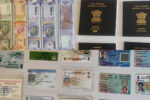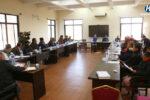Over the past several months, schools and colleges across Nepal are going through confusion about opening or not or how to open. The question is, should they open? If so, then when and how?
Okay, let me ask all of us, are we ready to resend our beloved kids back to schools? Is this safe? Or how can we make this safe?
This is the right time to think about this, be it a parent, guardian, or school management, setting the Post-COVID checklist for reopening schools is the real need of today.
Is it safe to return in-person activities? At what point and with what adjustments? The common goal now is very simple, it’s to help people live longer, decrease infection rates, and to minimize pain and suffering from the crisis.
In contrast to the first wave, the second wave is putting children at more risk. After knowing that kids are also vulnerable to COVID, what should our plan be like to resend them in their school?
We must encourage active engagement with concerned stakeholders – including students, parents, and caregivers – in all decisions that impact their lives, families, safety, and education.
What adjustments and precautions are to be taken? This is a blur situation but making the right decision at right time can save the forthcoming generation.
Covid has altered everybody’s life, but the closure of schools has meant the impact on the very young could be long-lasting and difficult to predict.
Insecurity, isolation from peers and depression to malnutrition from missing out on daily meals for the poor, and obesity due to lack of physical activities for the affluent families are apparent.
On the other side, Kids are being more addicted to digital games and gadgets, which also strongly signifies the urgent need of getting back to school. But again, is it possible? If possible then how?
We must encourage active engagement with concerned stakeholders – including students, parents, and caregivers – in all decisions that impact their lives, families, safety, and education. Students can be strong allies in strengthening efforts and reinforcing or amplifying public health messages.
With whom are our kids come into physical contact after reopening?
- The driver and assistant who come to pick the kids from home to school.
- The security guard who welcome them first at the school.
- The cleaners who keep the school tidy
- The teachers who are in very close contact with the kids most of the times
- The cook and the canteen people who serve them
- The management people
- These are the people from various departments of the same school. Now, what should be done to keep school safe?
Double dose of vaccine
- Check antibodies level after vaccination to make sure the vaccine has worked.
- Make sure they are fit and not suffering from cardiac or lung disease.
- The family members of all these people are vaccinated and have developed the antibodies
- There should a strong protocol for parents who send their unwell kids to school. Especially for those parents who send their unwell children without getting COVID check clearance in case of symptomatic health condition.
- Drinking water must be from home, no group water drinking structures or systems shall be promoted in schools.
- Any food from any source should not be shared within school premises.
- Last but not the least, reopening schools must be viewed differently from unlocking the economy.
We shall wait for this Pandemic to be endemic, infection rates are getting lower, and sooner we shall bounce back. However, in the meantime, we must also focus on drafting a clear protocol for safe practices in schools.
(Ravi Chaudhary is Executive Director at Vayodha Hospitals, Balkhu, Kathmandu)









Comment